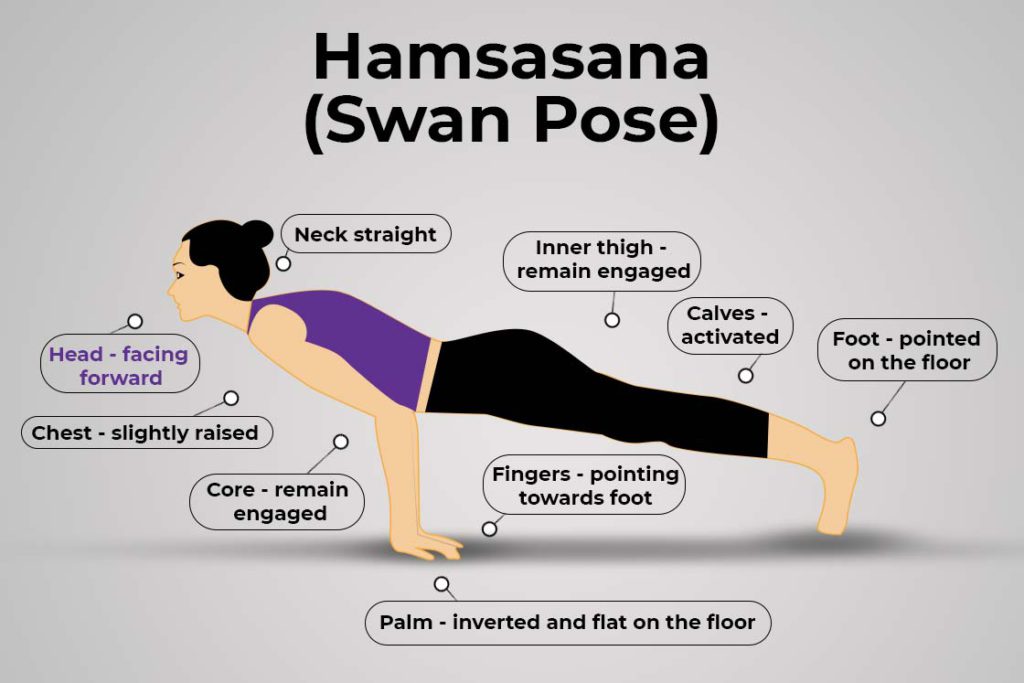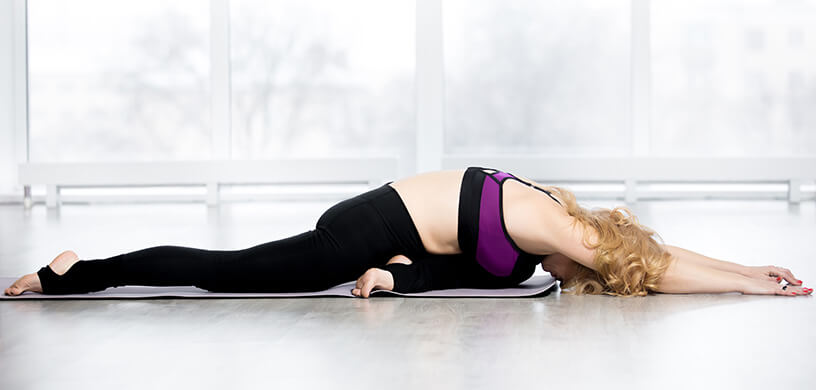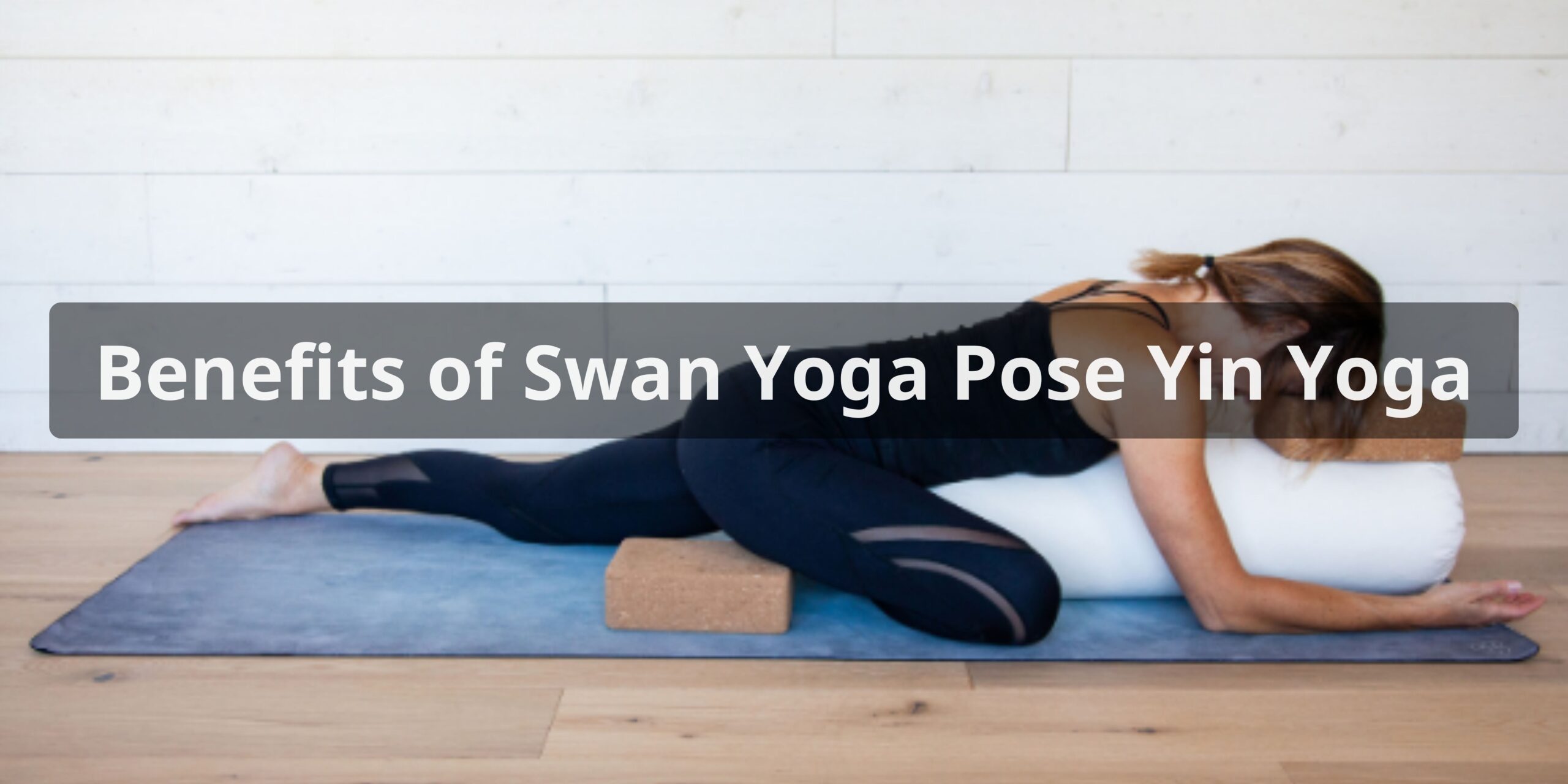The swan pose, also known as eka pada rajakapotasana, is an excellent posture in yin yoga that provides a deep stretch for the hips, thighs, and groin. Incorporating swan pose into a yin yoga sequence 2-3 times can provide many benefits for the body and mind.
What is Swan Yoga Pose?

The swan pose is a seated forward fold that involves stretching one leg straight out in front while bending the other leg so the foot is pressed against the straight leg’s inner thigh. This posture resembles a swan with one wing stretched out, which is how it got its name.
To get into swan pose, sit on the floor with both legs extended straight out in front of you. Bend the right knee and bring the right foot to the inside of the left thigh, with the right heel close to the pubic bone. Press the right foot strongly into the left inner thigh and straighten the right leg as much as possible. Inhale and lift the chest, then exhale and hinge forward at the hips, reaching your torso toward the extended left leg. Allow your body to relax and sink deeper into the stretch with each exhale. Hold this pose for 3-5 minutes, then repeat on the opposite side.
Benefits of Swan Pose in Yin Yoga
Holding swan pose for several minutes provides an excellent opportunity to relax and release tension in the hips, groin, and thighs. Here are some of the main benefits of incorporating this pose into a yin yoga practice:
- Stretches the hips and inner thighs: The internal rotation of the bent leg paired with the external rotation of the straight leg provides a deep stretch through the inner thighs and hip rotators. This can help improve flexibility in the hips.
- Calms the nervous system: Holding swan pose for an extended time with slow, steady breathing helps activate the parasympathetic nervous system to reduce stress and anxiety. The forward fold is calming.
- Aids digestion: Massaging the abdomen gently with this forward bend posture can aid healthy digestion and elimination.
- Relieves sciatica: The twisting action and hip stretch may help reduce compression on the sciatic nerve, relieving pain and discomfort.
- Prepares for meditation: Moving into stillness after this pose calms the mind and enhances focus, preparing you for meditation.
- Releases lower back tension: The stretch along the back of the straight leg can help relieve tightness and discomfort in the hamstrings and lower back.
Tips for Practicing Swan Pose

Here are some tips to get the most out of swan pose during your yin yoga practice:
- Hold the pose for 3-5 minutes on each side. Use props like bolsters or blankets to support you if needed.
- Keep the bent knee stacked directly over the ankle to protect the knee joint.
- Flex the feet strongly to engage the leg muscles and protect the knees.
- Walk the fingertips forward to deepen the stretch as the body relaxes into the pose.
- Keep the spine long throughout the pose by lifting the chest and sitting tall before folding forward.
- Relax the head, neck, and shoulders completely to release tension.
- Focus on taking slow, full breaths deeply into the belly as you hold the pose.
- Come out of the pose slowly and pause in a neutral seated position after to allow the body to integrate the effects before moving on.
Conclusion
Swan pose is an excellent addition to any yin yoga sequence, providing a deep hip and groin stretch that also stimulates relaxation. Incorporating this posture 2-3 times during your practice can help improve flexibility, calm the nervous system, support digestion, and relieve back tension. Move slowly into the pose, relax completely, and breathe deeply to receive the most benefits from yin yoga. With its calming, restorative nature, swan pose is a great way to enhance any yin yoga practice.
FAQs About Swan Yoga Pose Yin Yoga
What are some common challenges or discomforts people might face when practicing Swan Pose, and how can they be addressed?
Common challenges in Swan Pose include tightness in the hips and discomfort in the lower back. These can be addressed by using props like bolsters or blankets under the hips for support. Gradually easing into the pose and practicing patience can also help alleviate discomfort.
What role do props like bolsters and blocks play in enhancing the practice of Swan Pose?
Props like bolsters and blocks provide essential support in Swan Pose. Placing a bolster under the hips or using blocks for the hands can reduce strain and make the pose more comfortable. Props encourage relaxation and help practitioners maintain the pose for an extended period, deepening the stretch and benefits.
Can Swan Pose be incorporated into a regular Yin Yoga routine, and if so, where does it fit best?
Yes, Swan Pose can be incorporated into a regular Yin Yoga routine. It fits well within the sequence of hip-opening poses, typically practiced after warming up the body with gentler stretches. Swan Pose can be an effective way to release tension in the hips and lower back and promote flexibility.
How does Swan Pose contribute to emotional and mental well-being, in addition to its physical benefits?
Swan Pose encourages emotional release by targeting the hips, where people often store emotional tension. The deep stretch can help release pent-up emotions, leading to a sense of emotional release and balance. Coupled with mindful breathing, Swan Pose fosters mental relaxation, reducing stress and promoting a sense of calm.
Can practicing Swan Pose help improve hip flexibility and alleviate tension in the lower body?
Yes, Swan Pose is beneficial for improving hip flexibility and releasing tension in the lower body. It targets the hip flexors and quadriceps while stretching the groin and lower back. Regular practice can lead to increased hip mobility and a sense of relief from lower body tension.

